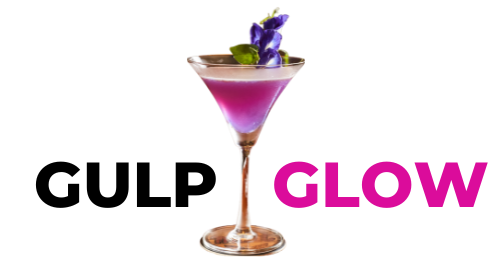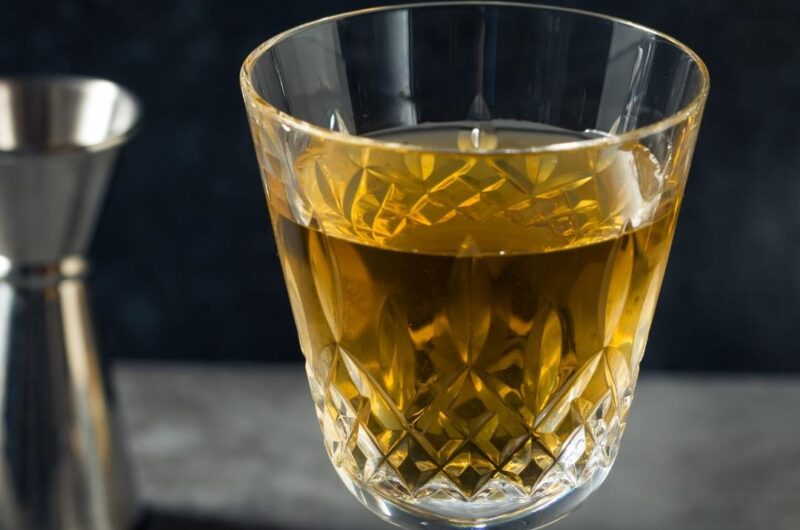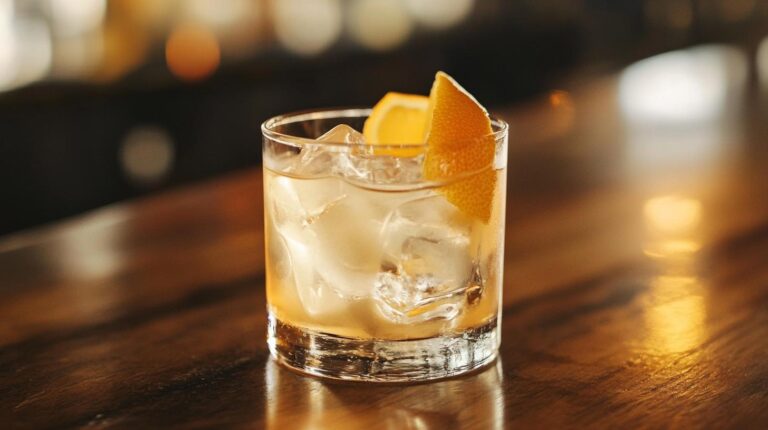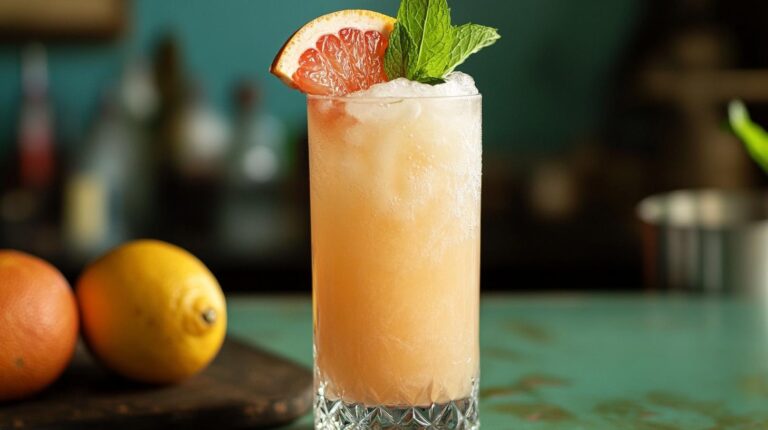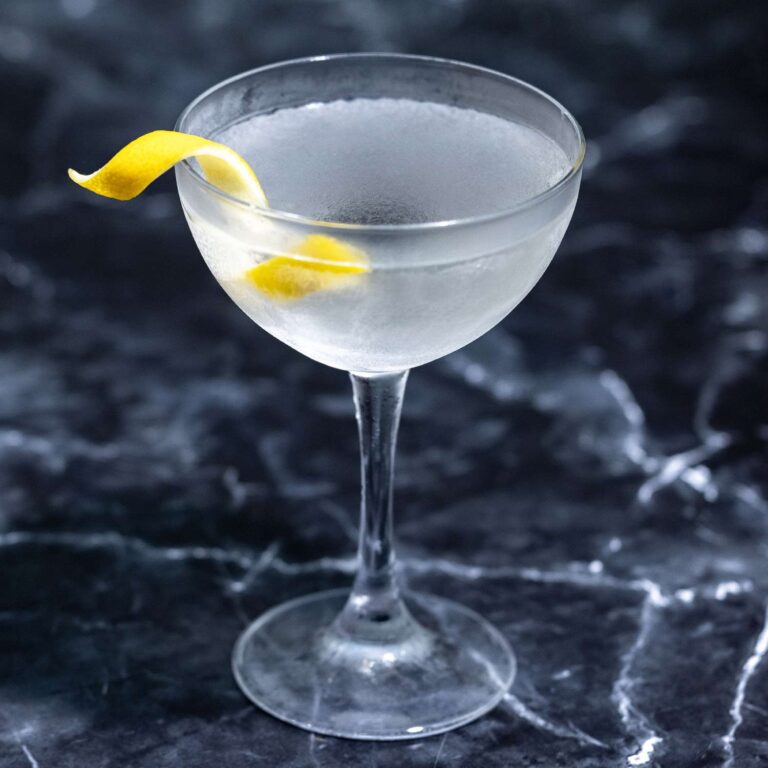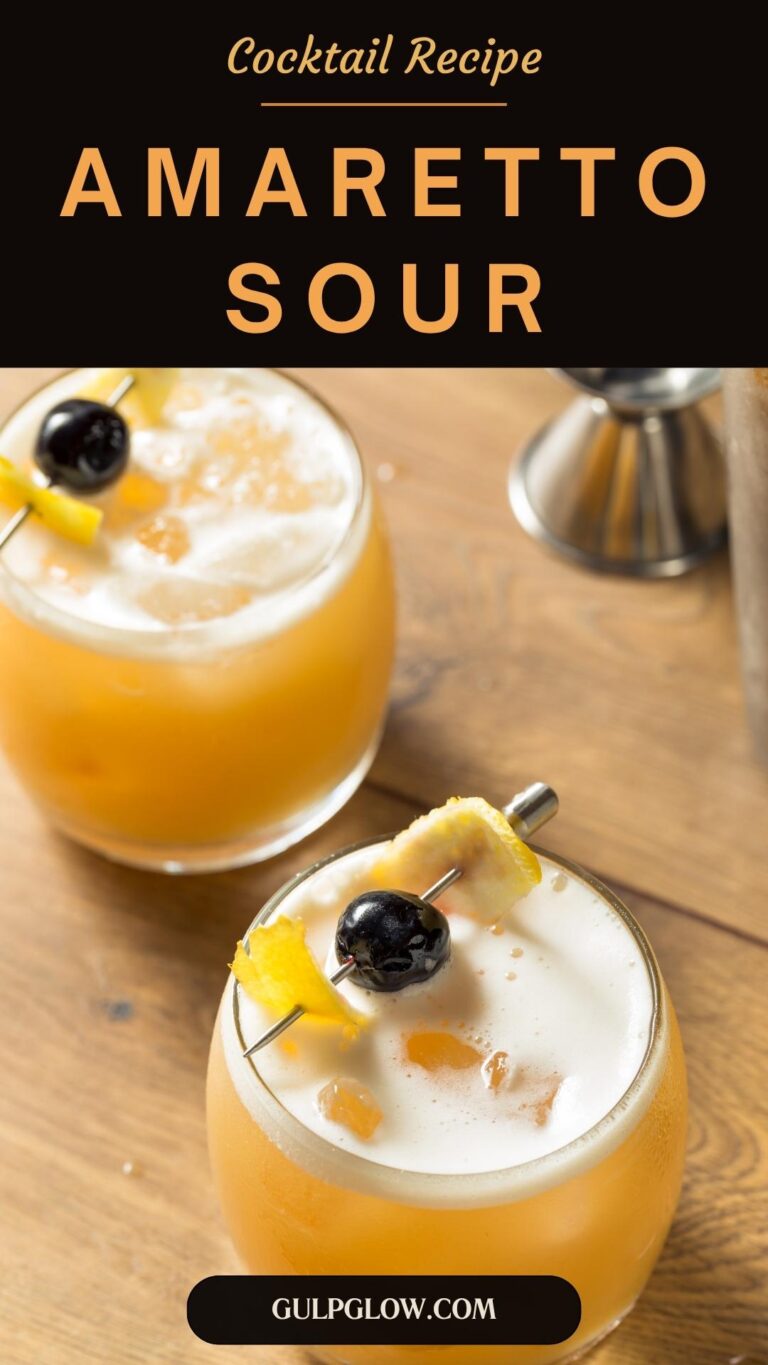Bijou Cocktail: A Jewel-Toned Revival of Botanical Elegance
The Bijou Cocktail—whose name literally means “jewel” in French—is a striking, herbaceous classic that brings together gin, sweet vermouth, and green Chartreuse in a deep, gem-like harmony. The drink’s name reflects its components: gin (diamond), vermouth (ruby), and Chartreuse (emerald). When mixed in perfect balance, these ingredients create a cocktail that is both rich in color and layered in flavor, as precious and timeless as the stones it’s named after.

Though not as famous today as its siblings like the Martini or Manhattan, the Bijou is a bartender’s favorite—a drink that delivers intensity, complexity, and a sense of vintage luxury. The first time I sipped one, it reminded me of antique apothecaries and velvet lounges, thanks to its bold green hue and powerful herbal scent. It’s a cocktail that whispers of forgotten opulence, and once tasted, it’s rarely forgotten.
Quick Facts: Bijou Cocktail
Method: stirred
Flavor profile: herbal, sweet, spicy
How to serve it: up (no ice)
Glassware: coupe or Nick & Nora glass
Alcohol content: ~25–28% ABV, ~22–24 grams of alcohol per serving
Ingredients
- 1 oz London dry gin
- 1 oz green Chartreuse
- 1 oz sweet vermouth
- 1 dash orange bitters
- Garnish: lemon twist or cherry
- Ice (for stirring)
Notes on Ingredients:
Gin:
Go for a dry, juniper-forward gin that can hold its own against the boldness of Chartreuse. Great options include:
- Beefeater
- Tanqueray
- Plymouth (slightly softer but classic)
- Avoid overly floral or modern gins that might muddy the mix.
Green Chartreuse:
A legendary French herbal liqueur made by Carthusian monks, featuring 130 herbs and botanicals. It’s potent, spicy, and sweet—a cocktail in itself.
Sweet Vermouth:
Use a balanced, slightly spicy vermouth to complement the gin and Chartreuse. Try:
- Cocchi Vermouth di Torino
- Dolin Rouge (for lighter versions)
- Carpano Antica Formula (for richness)
Bitters:
Just one dash of orange bitters adds structure and brightness, tying the other elements together.
Equipment Needed
- Mixing glass
- Bar spoon
- Jigger
- Hawthorne or julep strainer
- Chilled coupe or Nick & Nora glass
- Citrus peeler
The Bijou is best made slow and cold—take your time stirring to get a smooth, silky texture and balanced dilution.
Step-by-Step Instructions
1. Chill your glass.
Pop your coupe or Nick & Nora glass in the freezer or fill with ice water while you prepare the drink.
2. Combine ingredients in a mixing glass.
Add:
- 1 oz gin
- 1 oz green Chartreuse
- 1 oz sweet vermouth
- 1 dash orange bitters
3. Add ice and stir.
Fill with ice and stir for 30 seconds, or until thoroughly chilled and slightly diluted. You want a smooth texture—not a punch in the mouth.
4. Strain into glass.
Empty your chilled glass and strain the mixture in smoothly, watching that deep, jewel-toned green swirl into place.
5. Garnish.
Twist a lemon peel over the drink to express oils, then drop it in or discard. For a deeper, dessert-like version, try a brandied cherry.
Serve immediately and enjoy slowly.
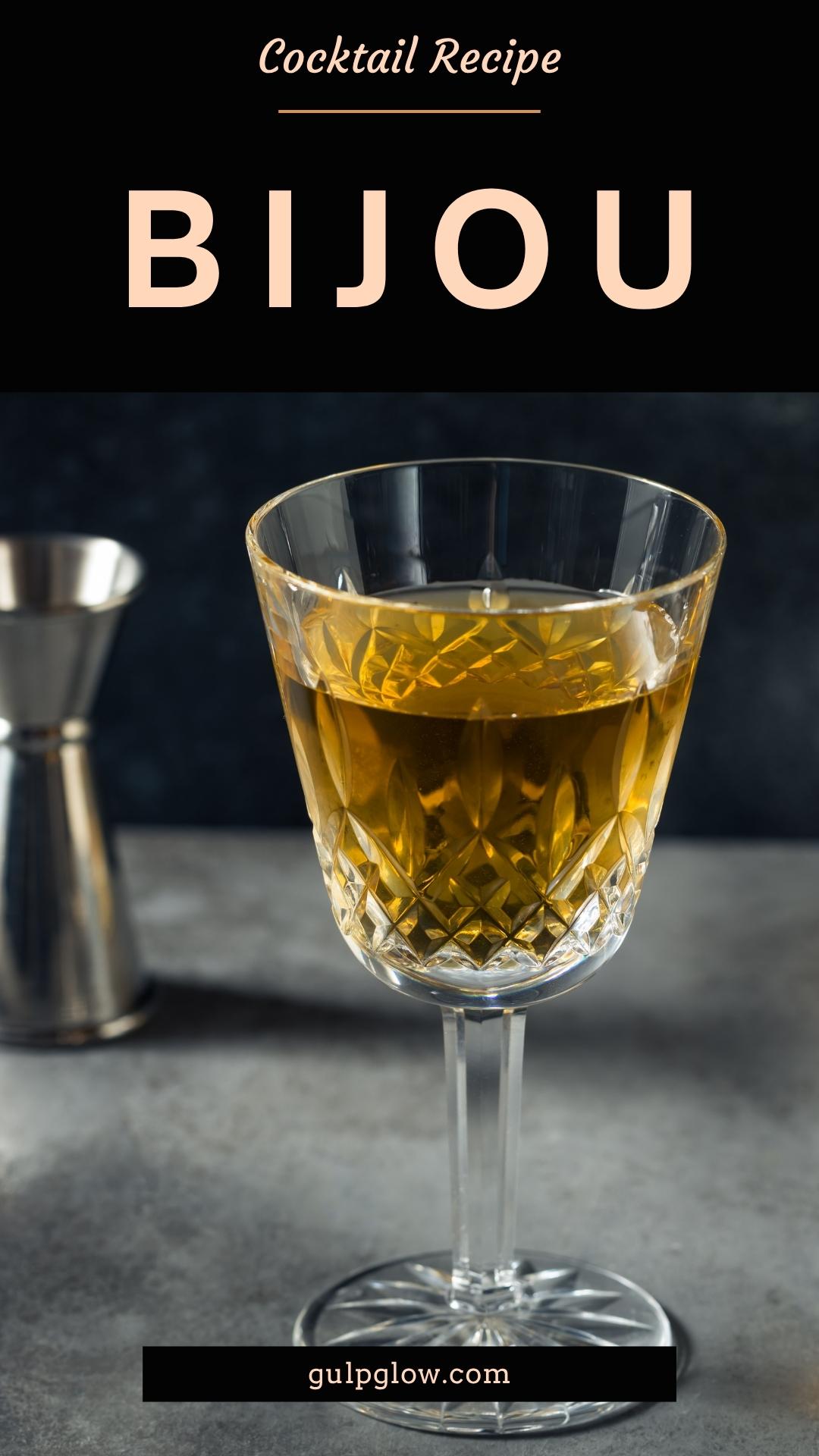
Flavor Profile and Tasting Notes
The Bijou is bold, botanical, and unapologetically rich. It begins with bright herbal notes from Chartreuse, grounded by the gin’s sharpness and the vermouth’s gentle sweetness.
On the palate:
- Starts sweet and herbal with Chartreuse and vermouth
- Develops into spice and bitterness, with gin adding dryness
- Finishes with a lingering green, mentholic warmth and orange zest
It’s not a beginner’s drink, but for lovers of bold, vintage-style cocktails, it’s an absolute gem.
Pairs well with:
- Dark chocolate and orange zest
- Aged cheeses with herbal rinds
- Rich charcuterie or pâté
- Rosemary-roasted almonds
- Savory tarts or mushroom-based bites
Garnishing and Presentation
The Bijou is already visually arresting, with its glowing emerald hue. Keep the garnish minimal to let the color shine.
Glassware:
- Nick & Nora glass gives a vintage feel
- Coupe glass adds a touch of modern glam
- Chill your glass thoroughly—this is a spirit-forward cocktail best served ice-cold
Garnish options:
- Lemon twist – brightens and contrasts the green
- Brandied cherry – adds richness and nods to classic styling
- No garnish – if you want to lean into the minimalist, gem-like presentation
Use a fine strainer if you want ultra-clear presentation—particularly beautiful with the bright, almost metallic color of the finished cocktail.
Pairing Suggestions
The Bijou pairs best with bold, umami-rich, or herbal-forward foods, as well as items with citrus, salt, or dark sweetness.
Savory pairings:
- Herbed goat cheese or blue cheese
- Porcini mushroom crostini
- Duck liver pâté with toast
- Garlic-stuffed olives or pickled vegetables
Sweet pairings:
- Dark chocolate truffles with mint
- Orange and thyme shortbread
- Pistachio baklava
- Candied ginger
It’s also excellent with a post-dinner cheese board or during late-night conversations.
Cocktail History and Trivia
The Bijou dates back to the 1890s, originally appearing in Harry Johnson’s Bartender’s Manual, one of the earliest cocktail guides. In its earliest form, it featured equal parts gin, vermouth, and Chartreuse, symbolizing the precious stones—diamond (gin), ruby (vermouth), and emerald (Chartreuse).
By mid-century, the Bijou had faded into obscurity, likely due to the complexity of ingredients and changing palates. But during the cocktail renaissance of the 2000s, it was revived by bartenders and enthusiasts who appreciated its vintage mystique and bold flavor.
Some modern recipes dial back the Chartreuse to avoid overpowering the drink, but the equal-parts version remains true to the original spirit: rich, balanced, and unapologetically green.
Serving Suggestions
The Bijou is perfect for evening sipping, cocktail hours, or after-dinner winding down.
Serve it:
- At cocktail parties to show off your vintage know-how
- As a dinner party aperitif, especially when paired with charcuterie
- For slow, thoughtful sipping in front of the fireplace or a moody jazz playlist
- At whiskey or gin tastings, as a palate-turning conversation piece
It’s also a brilliant choice when you want to impress a guest with something unexpected and historical.
Alcohol Content and Alternatives
With three spirit-heavy ingredients, the Bijou clocks in around 25–28% ABV, depending on the brands and dilution.
To reduce strength:
- Use a 2:1:1 ratio (gin: vermouth: Chartreuse)
- Serve over a large ice cube in a rocks glass for slower sipping
- Stir longer for more dilution
Mocktail version:
- 1 oz Seedlip Garden (or other botanical non-alcoholic spirit)
- 1 oz non-alcoholic sweet vermouth (like Lyre’s Aperitif Rosso)
- ½ oz herbal tea concentrate (like chamomile + mint)
- Dash of orange blossom water or NA bitters
Stir with ice and strain into a coupe. Garnish with lemon.
Frequently Asked Questions (FAQ)
Is the Bijou very strong?
Yes—like most pre-Prohibition cocktails, it’s all spirits. Stir well and sip slowly.
Can I adjust the proportions?
Absolutely. If the Chartreuse is too strong, try 1½ oz gin, ¾ oz vermouth, ½ oz Chartreuse. It softens the herbal punch.
What if I don’t have green Chartreuse?
There’s no true substitute, but you could use yellow Chartreuse for a softer, sweeter version—though it’s technically a different cocktail.
Why is it called “Bijou”?
“Bijou” means “jewel” in French, and the ingredients were chosen to represent precious gems: gin = diamond, vermouth = ruby, Chartreuse = emerald.
Can I batch this for a group?
Yes. Mix equal parts gin, Chartreuse, and vermouth. Chill well and stir individual servings with fresh ice before straining.
Bijou Cocktail Recipe
Ingredients
1 oz gin
1 oz green Chartreuse
1 oz sweet vermouth
1 dash orange bitters
Garnish: lemon twist or cherry
Ice (for stirring)
Directions
- Chill your glass.
- Stir all ingredients with ice for 30 seconds.
- Strain into a chilled coupe or Nick & Nora glass.
- Garnish and serve immediately.
Conclusion
The Bijou Cocktail is a forgotten gem that deserves the spotlight once more—a bold, aromatic, and beautifully balanced drink that transports you to the golden age of cocktails. With its jewel-toned color, rich botanical layers, and vintage mystique, it’s a drink that rewards the curious and satisfies the seasoned.
